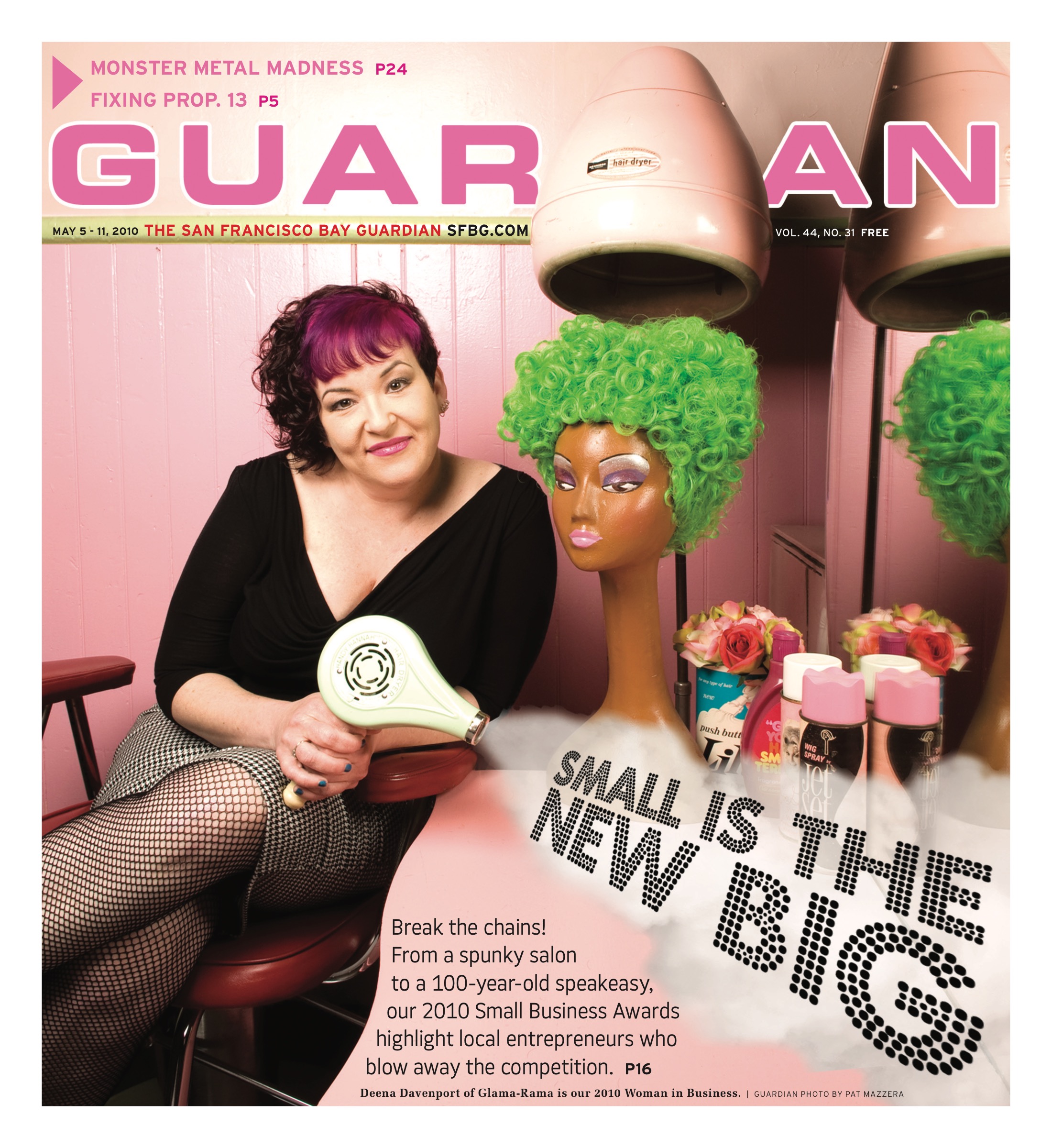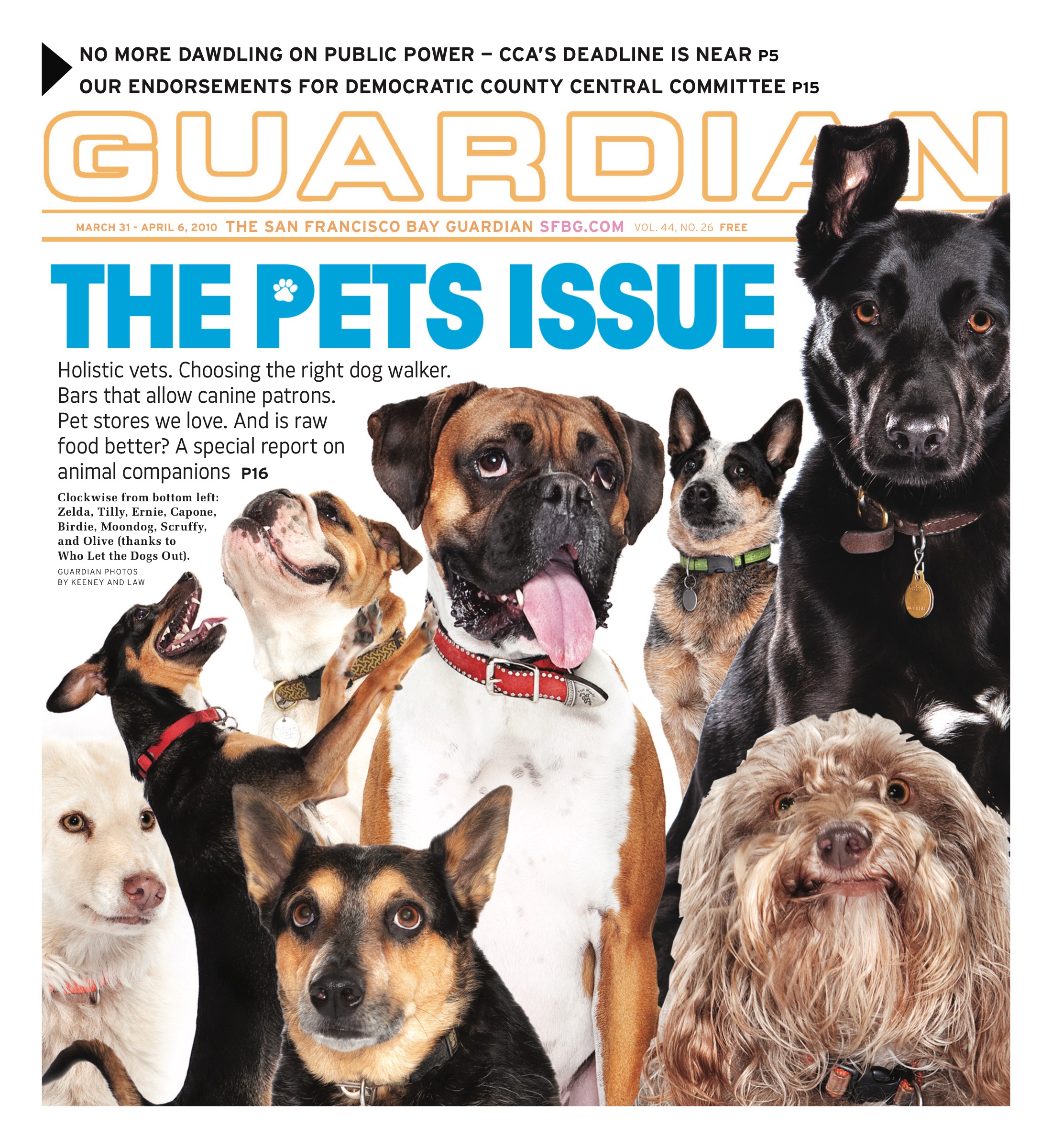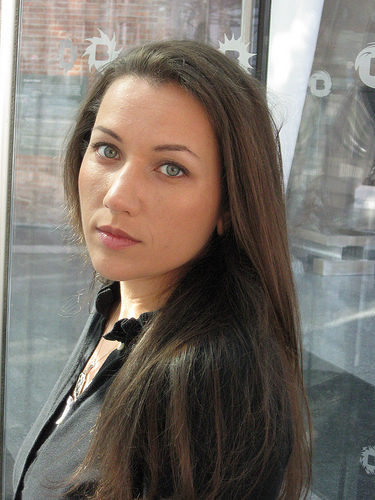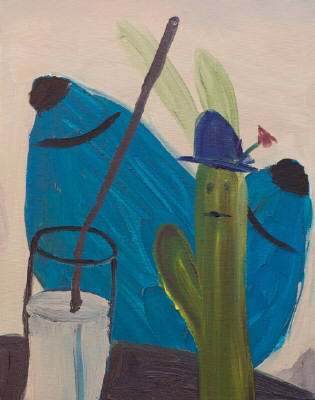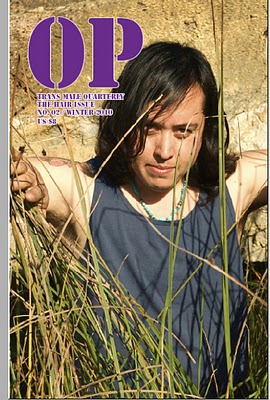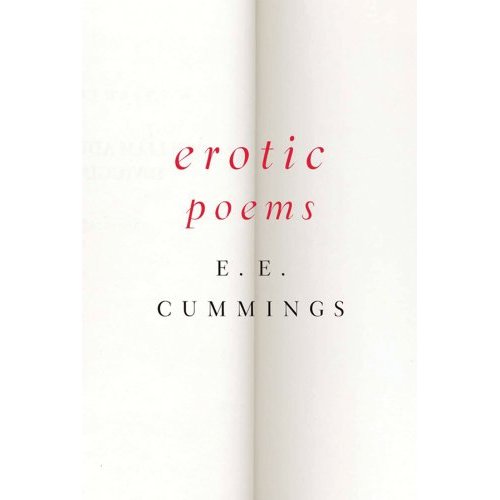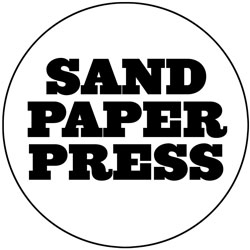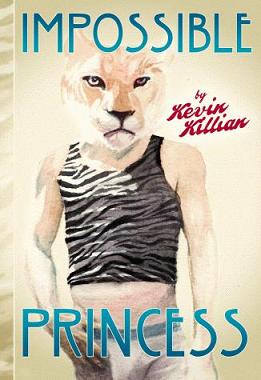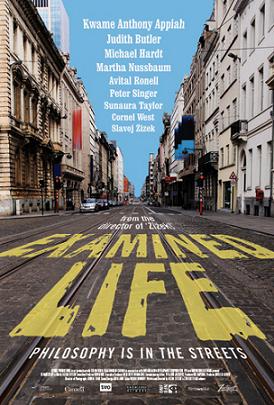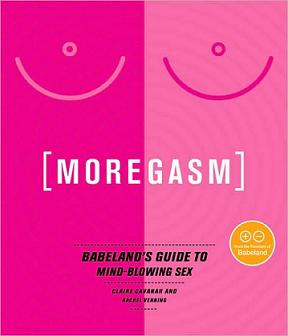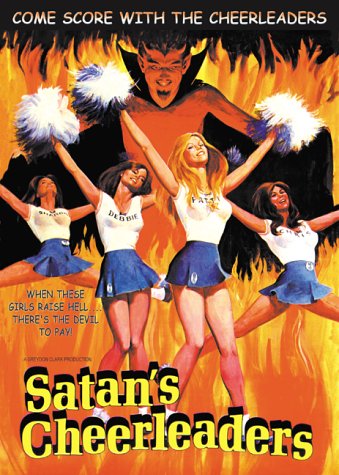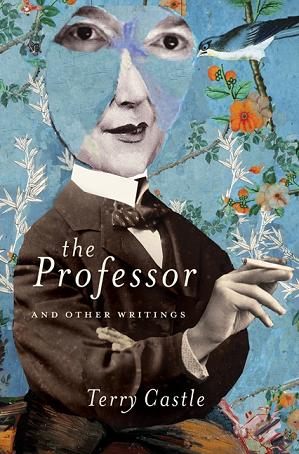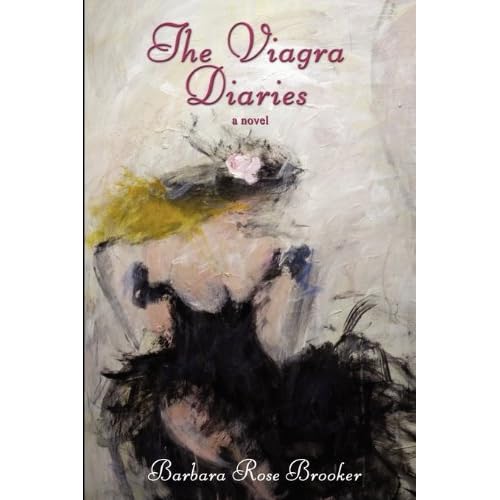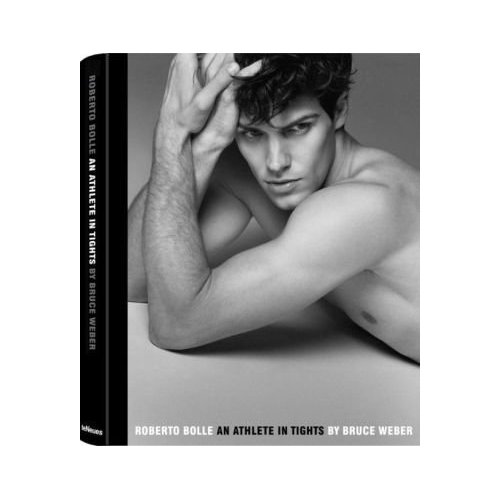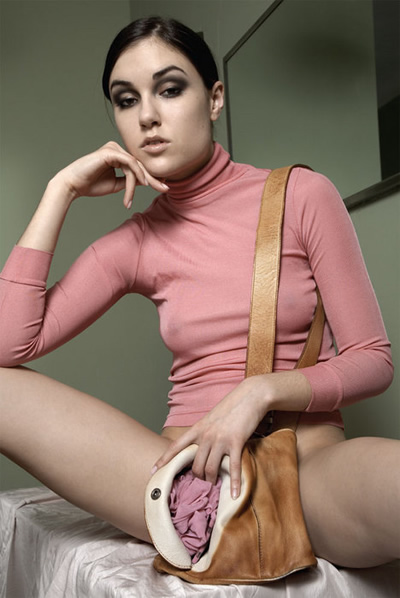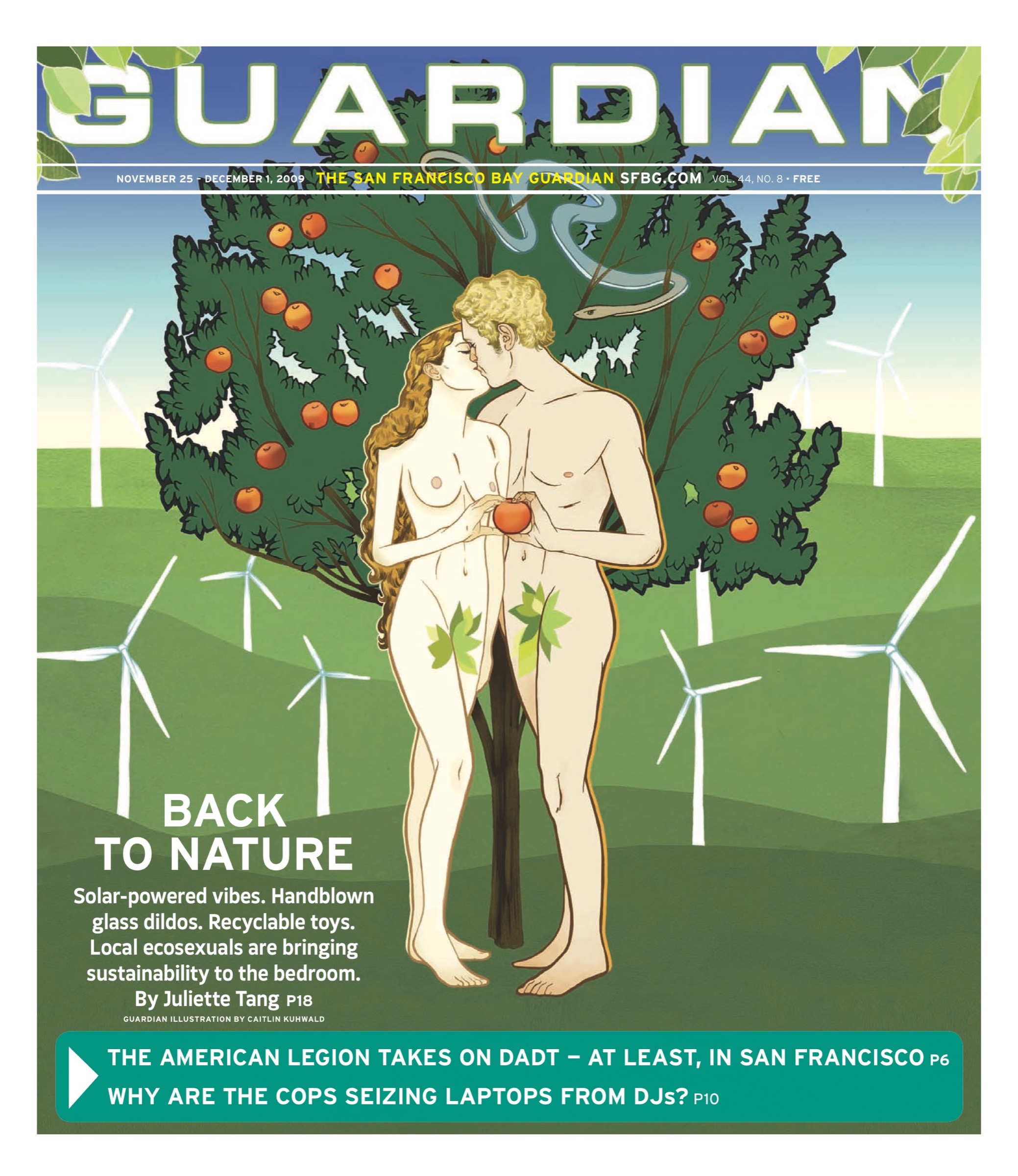culture@sfbg.com

Swingin’ with a star: Madison Young, photographed by Pat Mazzera
San Francisco is America’s capital of kink. Consider Sunday’s Folsom Street Fair (www.folomstreetfair.org) as a flagship holiday and the Armory, occupied by Kink.com, as a kind of sexual City Hall, and there’s little dispute.
But it may seem peculiar for a city so committed to gender and sexual equality to be the patron city of BDSM: a complicated acronym that stands for bondage and discipline (BD), domination and submission (D/s), sadism and masochism (SM). In crude terms, BDSM relationships are marked by deliberate and sometimes extreme inequality, where a submissive party voluntarily forfeits partial or complete physical, psychological, and emotional control to a dominant one. Although "switching" does occur, D/s — the Dominant (capital D) and submissive power dichotomy — may seem to be everything our traditional concept of liberal empowerment and classical feminism rail against.
But while it might be difficult for some to grasp, BDSM — which includes a broad spectrum of sexual acts including (but not limited to) bondage, corporal punishment, electrostimulation, piercing, branding, suspension, golden showers, and asphyxiation, as well as general play relationships like age play, pet play, medical play, and cross-dressing — is controlled by a strict code of behavior referred to as "SSC," or "safe, sane, and consensual." San Francisco even has its own BDSM nonprofit, the Society of Janus, which was founded in 1974 to promote safe adult power exchange.

Ropes aficionado Fivestar, photographed by Pat Mazzera
And unlike that other U.S. capital, Washington, D.C., where women are systemically outnumbered in the decision-making process, in San Francisco’s kinky community, strong and sexually empowered women are well represented — if not always well understood.
Women in BDSM, unfair as it seems, often receive some of the harshest criticism from a varied opposition. D/s women frequently find their lifestyles attacked by religious groups, academics, psychologists, and sexual conservatives, as well as much of the midsection of the United States. Whether stigmatized as self-loathing antifeminists or insatiable man-eating jezebels — or dismissed as insane — much misinformation has been spread about women (gendered, self-identified) who operate within the community.
However, the strong, independent-minded D/s women of San Francisco will have the vanilla (their term for those who do not engage in BDSM activities) know that BDSM is not what you think. Indeed, BDSM: It’s Not What You Think! premiered last year at the Frameline Film Festival. Frameline, the longest-running film festival dedicated to LGBT programming, featured a cast of prominent figures in the San Francisco leather community, many of them women.
For the women of bondage in our city, many of whom maintain 24/7 D/s relationships, BDSM is considered a liberating force. The following profiles are shout-outs to just some of these women, each representing a different facet within the BDSM spectrum. Most have participated in the community for more than a decade — and all really, really love what they do.
In San Francisco, the old Rousseauian adage "Man is born free, but everywhere he is in chains," could easily be rephrased as: "Woman is born free, and everywhere she uses chains to get off".

Madison Young, photographed by Pat Mazzera
MADISON YOUNG, THE INGÉNUE
Madison Young refers to herself as the "kinky girl next door." With blue eyes, strawberry blonde hair, and a translucent, Kidmanesque complexion, Young is one of the most recognizable performers in the adult entertainment industry, though perhaps more recognizable to those who enjoy inflicting pain on women tied with rope.
"I found a Kink.com posting on Craigslist," Young says. "I had been involved in kinky sex before then, and was really into things like fisting and golden showers and light bondage. But I had never really done flogging or anything around rope bondage. Peter [Ackworth] was the first person who ever tied me up, and I fell in love with it instantly." Since then, she’s become famous, adored by fans for her raw, honest performances and for her incredible toughness.
And Young is really, really tough. Run a simple Google Image search and you’ll find photos of her subjected to things that would make a Navy Seal weep — like being suspended from one elbow by a single rope strung from the ceiling, with her legs pulled apart as far as legs can go. Young is one of the few working models who can withstand what is known as a "category five suspension," bondage positions so grueling they can only be endured for mere seconds. "I have a really high pain tolerance," she says. On a scale of 1 to 10? "Out of the models that exist, I’m a 10."
A self-identified masochist, Young’s interest in bondage is uniquely centered around rope. "I’m not really into metal restraints, scarves, zip ties, or anything like that. It has to be rope."
Young is also among a small but growing number of women who are writing, directing, and producing porn, and runs her own production house called Madison Young Productions. She also finds time to run Femina Potens, a female-focused art gallery located in the Castro.
www.madisonbound.com; www.feminapotens.org

Midori, photographed by Constance Smith
MIDORI, THE SENSEI
Midori, the artist formerly known as Fetish Diva Midori, is adamantly opposed to being portrayed exclusively within the confines of BDSM. "A lot of people, sure, see my bondage stuff. But that’s just one of many, many things that I do."
That may be so, but all the same, you can’t talk about San Francisco’s women of bondage without including a legend like Midori. While she might claim "I don’t distinguish S-M, because it’s just all sexuality," she is a huge personality, respected sex-educator, and popular author in the realm of BDSM. Her sought-after bondage workshops include weekend-long intensives on "rope bondage dojo," a type of bondage she developed and trademarked.
For Midori, growing up in Japan has had an enormous impact on her work, and her heritage manifests itself not only her rope bondage specialty in but also in her academic interests. She published a collection of S-M stories titled Master Han’s Daughter based in a Tokyo of the future and developed a course on contemporary sex culture in Japan. She also has written instructional books like The Seductive Art of Japanese Bondage and Wild Side: The Book of Kink and taught sex education courses all over the world.
Although stunning, this one-time fetish model and former professional dominatrix is wary of her status as a sex symbol. "If people appreciate my writing and enjoy my classes and get something out of it, and dig my work because of my art and my activism and stuff that I do, hey, that’s great. I think I’m, like, way past the age of being the pretty something, because after all I’m well in my 40s. There are certain people in my private life, well, I hope they think I’m sexy. But beyond that, I hope people appreciate my work because of its content."
www.planetmidori.com; www.ropedojo.com

Simone Kross, photographed by Constance Smith
SIMONE KROSS, THE ROLLING STONE
The perceived life of a traveling dominatrix is alluring: exotic getaways, extravagant dinners, five-star hotels transformed into makeshift dungeons. But the reality is not easy.
Says Simone Kross, a traveling pro-domme: "The perception is maybe that I am wealthy and I have clients flying me around and it’s really exotic and glamorous. It’s really not. It’s hard work, and I pay my own way. The clients and sessions help me fund getting from one place to the next, but it’s not as glamorous as it may seem. At least not for me."
Kross has no illusions about her frequently grueling work. While working out of hotels, she runs her advertising on Eros Guide, a large online erotic service listing. "I can get busy to the point where I might not see the outside of a hotel room for three or four days. After I finish my sessions I can be pretty tired, order room service, and go to bed. I could be doing sessions from one in the afternoon until 10 at night."
An added stress is traveling with heavy gear. "The biggest problem is weight requirements, because you have to keep it under 50 pounds," she says. What could be so heavy? "You’d be surprised," she says. "Leather and metal, D-rings, rope, whips. I don’t even use half the gear I pack, but you never know what someone requires for a scene. The shoes also tend to weigh quite a bit."
Explaining a suitcase full of floggers, rope, gags, whips, and harnesses to airport security might seem awkward, but Simone says "they have checked my bags because they are a little heavier, but no one has given me any problems."
You can see Kross, a gorgeous brunette with cheekbones that appear perfectly convex from every angle, in action on Men in Pain, a chapter of Kink.com.
www.simonekross.com

Natasha Strange, photographed by Constance Smith
NATASHA STRANGE, THE PRINCESSA
Now that the age of feudalism has passed, not many women can admit to having a coterie of ladies-in-waiting, so Natasha Strange’s "pink posse" — cross-dressing clients who have offered their services to her — is quite the blast from the past. And their title is not in name only: these ladies (or "sissy boys") actually do wait on Natasha.
For instance, Sissie Sandra’s responsibilities include walking Strange’s dog and running errands, duties that Sandra faithfully blogs about on a site called "Sandra in Waiting." Who knew moving someone’s car to avoid a street- cleaning ticket could be so erotic?
To her ladies-in-waiting, Strange is "the Princessa": a draconian ruler (they wouldn’t have it any other way) whose Marie Antoinette-esque whims become the word of law. With her wide blue eyes and long wavy hair, she resembles a cupcake Glinda the Good Witch, and it’s not hard to see why her pink-clad sissies have grown attached over the years.
Strange lives a charmed life. Her career began at Fantasy Makers, a fetish house in Oakland, when she was 25. Through her relationships with dedicated clients, her talents as a mistress, and sheer luck, she has fallen into a life many young dominatrices can only dream of.
She doesn’t take that luck for granted. "I have been really, really lucky to establish myself with a clientele that is really devoted to me," she says. "I don’t have to go out and hustle nearly as much as I did when I started out, even in this economy."
While she isn’t taking new clients, Strange hasn’t retired as a dominatrix just yet.
"I don’t think good dommes really retire. They sort of fade away. They take their favorite clients and they go. That’s probably what I’m starting to do. I haven’t advertised anywhere in two years. I’ve taken 90 percent of my website down. But I still have my tight-knit little group of subbies and sissies."
www.kittenwithawhip.com; sandrainwaiting.blogspot.com

Val Langmuir, photographed by Constance Smith
VAL LANGMUIR, THE ACTIVIST
If you’re not living a BDSM lifestyle, it’s unlikely that you’ve heard of the Exiles and the sizable contribution they have made to the San Francisco BDSM scene.
This group, an educational organization (for women) that teaches safe BDSM (between women), had several lives before becoming the organization it is today. Says Val Langmuir, co-coordinator, "The Outcasts was the name of the former group. It originated in 1984 and ceased to exist in 1997. The Exiles was founded in 1997 by former Outcasts and immediately held its first program: Guns, Knives, and Choking, Oh My."
While it appears as if these women enjoy flirting with death, hardcore BDSM is the reason the Exiles exist in the first place: they want to make sure women know how to engage in it and survive. Their classes have included controversial topics like "Brutal Affection: Punching, Kicking, Slapping, and Sex," "The Art of Hazardous Age Play," and a program educating attendees on breath play, or what Langmuir describes as "how not to kill yourself when engaging in erotic asphyxiation." Langmuir moved to San Francisco 12 years ago from London, where she protested the horrifying Spanner Operation in 1990 that saw 16 Manchester gay men arrested and thrown in jail for participating in BDSM. Since then, Langmuir has been dedicated to advocating the right to participate in BDSM.
She has been involved with the Exiles since its inception. "We have meetings in the Women’s Building the third Friday of every month. Usually at each meeting, I’ll see at least one new face."
www.theexiles.org

Selina Raven, photographed by Constance Smith
SELINA RAVEN, THE MRS. ROBINSON
A former Catholic schoolgirl who attributes her sadistic tendencies to "all of those Sunday mornings spent contemputf8g the bloody figure of Christ," Raven began her pro-domme career in a structured, hierarchical way: she apprenticed. "There aren’t a lot of other women who are practicing BDSM as professionals who went through the process of apprenticing themselves to an older mistress. There’s only one other woman in SF right now, Eve Minax, who has actually done things in a more traditional manner."
Now Raven is not only one of the most established mistresses in San Francisco (and a 2007 Guardian Best of the Bay winner), but something of a mentor to up-and-coming dommes. Perhaps it’s because Raven benefited personally from the tutelage of an older mistress, Sybil Holiday, that she "always resolved to be a friendly face in the community, in being that person who I wish was around when I was 18: a little wicked but armed with good information and good experiences. That’s why I see myself as Mrs. Robinson."
A popular guest lecturer at UC Berkeley and sex educator at the Academy of SM Arts, an organization based in Menlo Park with workshops around the Bay Area, Raven is a happily-settled Oaklander with a supportive leather family. "I have my slave, and I have my former apprentice. And her boy lives with us too. I do not lack for love and companionship, but it’s not in the traditional hetero-normative form."
www.selinaraven.com

EVE MINAX, THE TRANSFERRED QUEEN
"I love diapering," says Eve Minax. "Age-play is a huge force in my life."
AB/DL, which stands for adult baby/diaper-lover, is a paraphilia most people tend to find either comical or disturbing. Minax disagrees. "Diapering in and of itself isn’t about age play as much as it is about getting somebody into a primal state — that baby state, that place before you’re actually living, thinking, feeling, in civilization."
In terms of maternal figures, Minax — who is six feet tall in heels, with short spikes of orangey-red hair and a fluty, theatrical voice — looks more Auntie Mame than Mommy Dearest. That is, if Auntie Mame looked like she could flog you into an intensive care unit. (In fact, the first time I met Minax in person, her right wrist was in a cast. She sprained it while flogging a client too enthusiastically.)
And speaking of intensive care, Minax is known as much for her medical play as she is for age play — in case you’re on the market for a rectal exam.
After eight years of working in San Francisco and living in Chicago, Minax finally made the decision to make SF her home base last year, much to her own delight. "I come from Chicago. I’ve lived in Paris. I’ve lived in Melbourne. But San Francisco is the mecca for alternative sexuality. All everyone ever talked about was San Francisco! It was almost like having a religious experience. I wanted to wait until I was about to retire, but then finally I was like: fuck it, I’ll just move here."
Minax’s current projects writing a cookbook of "food and BDSM pairings", such as "pork ribs with a side of rubber gimp".
www.mistressminax.com
Editor’s note: This list is by no means exhaustive. There are an impressive number of women making an impact on San Francisco’s BDSM scene. In particular, we’d also like to give a nod to Cleo Dubois, Sybil Holiday, Madame Butterfly, Luncida Archer, Mistress Morgana, Fivestar, Maitres Madeline, Janet Hardy, Hollie Stevens, and Princess Donna.

